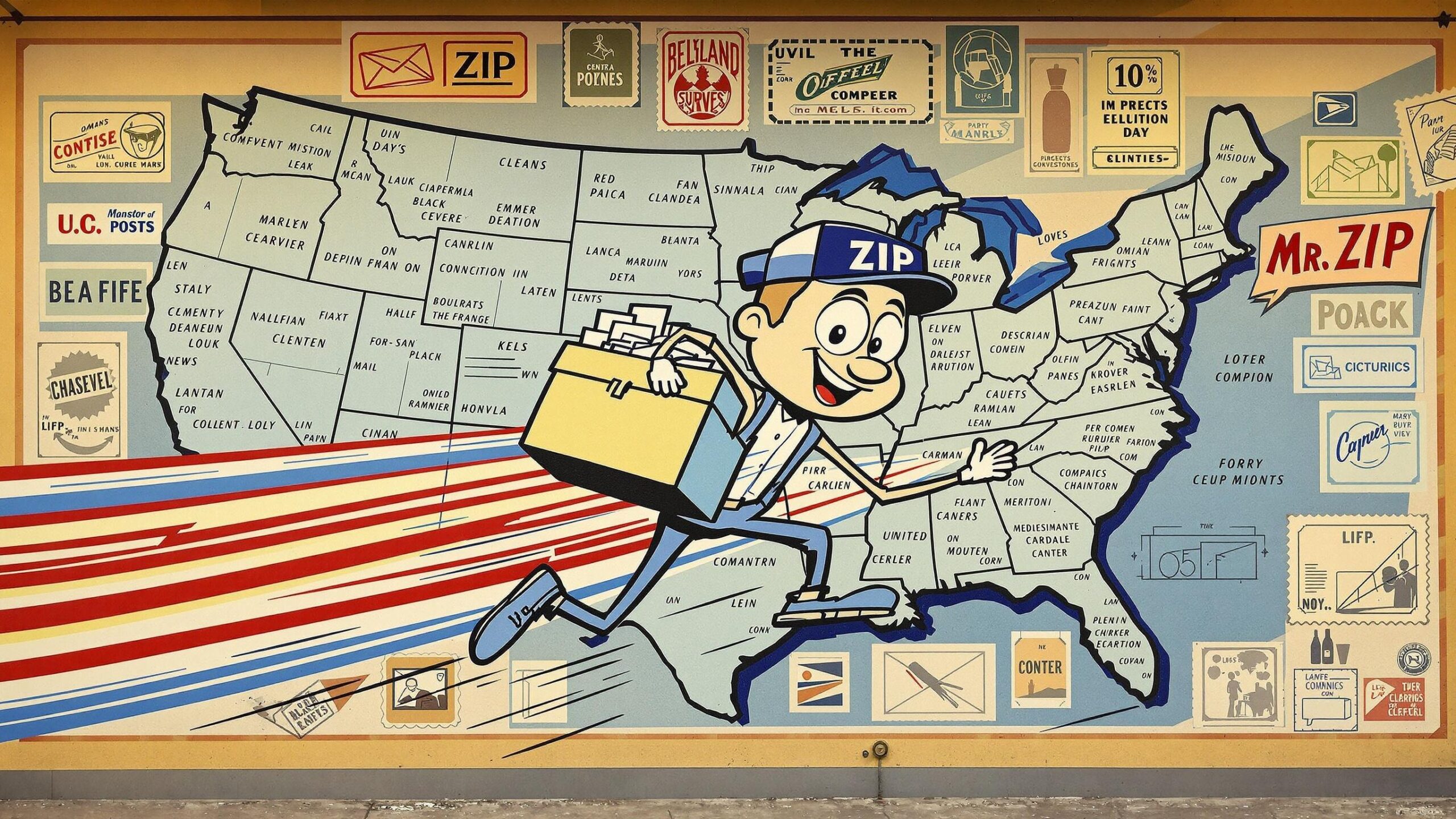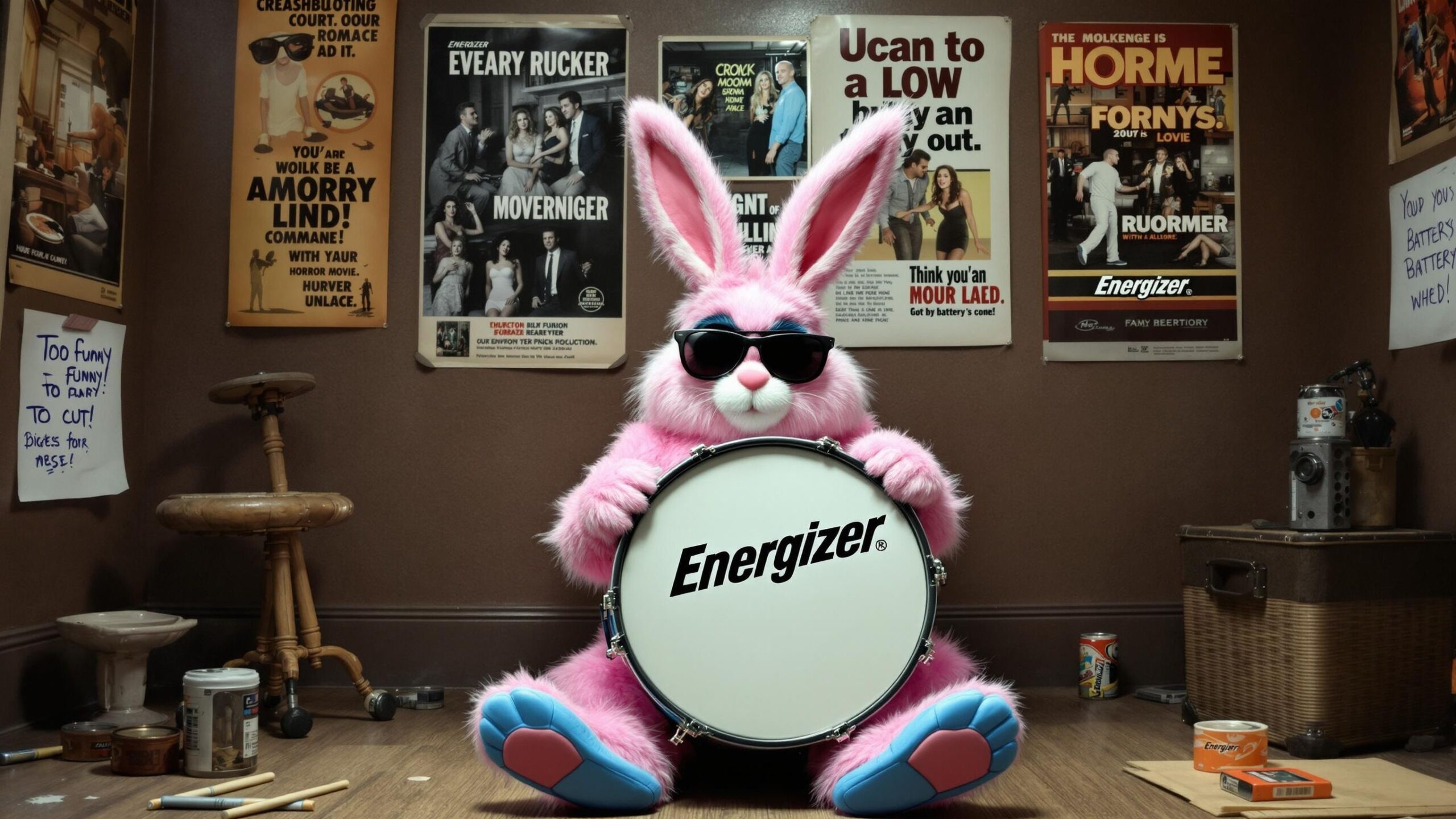Before the days of QR codes, email, and next-day shipping, the U.S. Postal Service had a secret weapon to help speed up your mail: Mr. ZIP. Introduced in the 1960s to promote the then-new ZIP code system, Mr. ZIP was a stick-figure-style character with a square head, speedy legs, and a mailbag full of charm. He didn’t have the celebrity status of Smokey Bear or the high-energy antics of modern mascots, but he played a huge role in transforming how Americans sent their letters. Often overlooked, but never outpaced, here are the Top 10 Reasons Mr. ZIP Was the Most Underrated Postal Mascot—and why this zippy little guy deserves a first-class spot in mascot history.
#10: He Helped Revolutionize the U.S. Mail System
Mr. ZIP wasn’t just a mascot—he was a movement. His mission was to educate Americans about using ZIP codes, which were essential for organizing and speeding up mail delivery. Thanks to his widespread appearances on posters, stamps, and post office walls, ZIP code adoption soared. It’s easy to forget now, but Mr. ZIP helped usher in a massive nationwide logistical upgrade—with nothing more than a smile and a trail of cartoon dust behind him.
#9: He Had Speed Before Sonic Did
With his outstretched limbs and windswept mailbag, Mr. ZIP was one of the first mascots to embody speed visually. Long before Sonic the Hedgehog or The Flash became pop icons, Mr. ZIP was zooming across envelopes to symbolize faster mail. His design—simple but effective—was all motion lines and forward momentum. He didn’t just deliver mail. He delivered it fast.
#8: He Was Everywhere—Even on Stamps
In the 1960s and ’70s, Mr. ZIP appeared not only in ads but also on the margins of millions of U.S. postage stamps. Known as “ZIP blocks,” these stamps featured Mr. ZIP in the selvage area to remind people to use ZIP codes. He became a familiar figure in homes across the country, making him one of the most widely printed mascots of all time—even if most people didn’t know his name.
#7: He Made Learning About ZIP Codes Fun
Convincing people to use a five-digit number on their envelopes doesn’t exactly scream excitement, but Mr. ZIP made it fun, friendly, and easy to remember. He starred in animated PSAs and print campaigns aimed at kids and adults alike, simplifying the message: “Use your ZIP code, and the mail moves faster.” His educational charm helped turn a boring bureaucratic change into a kid-approved initiative.
#6: He Preceded the Modern Brand Mascot Boom
Mr. ZIP debuted in 1963, during a time when mascots weren’t yet as central to brand identities. He predates the likes of Ronald McDonald, the Kool-Aid Man, and even Toucan Sam. As one of the first federally-endorsed characters used in mass advertising, Mr. ZIP paved the way for mascots as educational tools in public campaigns—long before it became standard marketing.
#5: He Was Designed by a Major Ad Firm
Mr. ZIP wasn’t amateur doodling—he was crafted by professionals. The character originated from a design by Harold Wilcox for Chase Manhattan Bank, then modified by advertising artist Joe Lawrence for the Post Office Department. Lawrence streamlined the look into the nimble, iconic mascot we recognize today. His clean lines and exaggerated movement were built for visual impact in both print and animation—making him one of the smartest design choices in mid-century public service marketing.
#4: He Had Merch Before It Was Cool
Mr. ZIP had buttons, posters, figurines, coloring books, and more. Long before mascots became brand empires, Mr. ZIP was on everything short of a lunchbox. Kids could collect Mr. ZIP goodies at post office events, and his smiling face made the concept of mail feel accessible and engaging. While his merch wasn’t flashy, it was everywhere—and helped embed him in everyday American life.
#3: He Promoted More Than Just ZIP Codes
Over time, Mr. ZIP became more than a one-issue character. He also promoted National Letter-Writing Week, encouraged holiday mailing deadlines, and reminded kids to write neatly and address letters properly. He became a kind of postal ambassador, making snail mail fun and personal. In a world that’s become increasingly digital, Mr. ZIP reminds us of a time when sending a letter was an experience—not just a task.
#2: He Had Global Influence
Though primarily used in the U.S., Mr. ZIP’s success inspired international postal services to adopt mascot-like icons to promote mail efficiency. He helped demonstrate how a single character could boost public adoption of complex systems like sorting codes, delivery times, and address formatting. His zippy legacy reached farther than most mascots of his time—literally and figuratively.
#1: He’s Still Going—Sort Of
Though officially retired from duty in the 1980s, Mr. ZIP still pops up in stamp collectors’ circles, historical exhibits, and even the Smithsonian’s National Postal Museum, where a Mr. ZIP statue greets visitors. He lives on as a symbol of a turning point in mail history and as a nostalgic throwback to government messaging done right. He may not bang drums or wear sunglasses, but Mr. ZIP kept American mail moving—and did it with style.
Mr. ZIP wasn’t flashy or loud—but he was fast, friendly, and far ahead of his time. As the face of a national campaign, he quietly transformed how Americans used the mail system, all while delivering smiles along with letters. Whether you remember him from a childhood poster or are just discovering him now, Mr. ZIP deserves a first-class stamp of approval. In a world of digital overload, he’s a charming reminder of the days when the coolest thing you could get was a letter in the mailbox—ZIP code and all.




